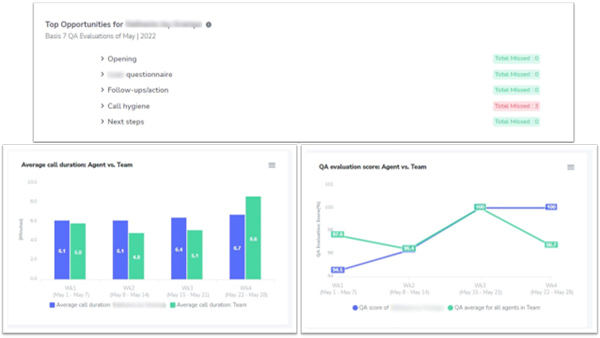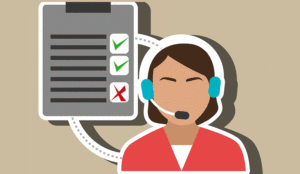What Is Agent Ramp-Up Time (also Known as Ramping)?
Agent Ramp-Up Time = Time taken by an agent to reach minimum levels of efficiency
There are a number of elements that inform the “Agent Ramp-Up Time” or “Speed to Competency”. These include metrics such as FCR, CSAT, Quality score, balanced scorecard, agent engagement or ESAT, AHT and productivity.
Typically, these are not measured against a single number, but rather a range for each. The ranges themselves are established by assessing your agent population and defining competency (the point where agents are independent, require little support, perform well in all metrics).
Minimum levels of efficiency should be custom defined, both at the account level and also at process level (e.g. # of SQLs generated, FCR %, CSAT, AHT levels, manual evaluation score etc.).
Focus should be on picking a handful of important metrics rather than focusing on all.
When interviewing agents, we ask how long it took for them to feel comfortable in their role…this correlates highly with when they achieve competency and are performing at similar levels to a tenured agent.
How to Calculate Agent Ramp up Time
The agent ramp up time formula is –
Agent Ramp-Up Time = Date Agent Achieved Proficiency − Date Agent Started
Worked Example Calculation
- Start Date: 2nd January
- Date Agent Achieved Proficiency: 16th February
Agent Ramp-Up Time = February 16 − January 2 = 45 days
Equally important is to understand that ramp-up is not a single point event but a time-series event, i.e. you start seeing a consistent trend in a key performance indicator, and that’s when ramp-up is considered to happen. Performance tracking becomes really important to understand if the agent has ramped up or not.
As an example, consider the performance charts below for one of the newly ramped-up agents at a customer. He was evaluated 7 times in May, when there were 3 hits around call hygiene parameters but they were not too significant, the AHT stands very close to the team average (though it’s required to be at 5 mins level) and QA evaluation score is consistently above 90% level (the minimum benchmark level).
FYI, this happened in the 3rd month of joining of this agent i.e. between the 60- to 90-day period.

Learning Curve, also Called Time-to-Proficiency.
To measure it, you first pick the KPIs and levels that you are defining as proficient, then you measure the time it takes for a new agent to reach that level of performance.
Keep in mind this is a measure that’s only applicable within a single operation, and not a benchmark metric. It can also be a bit fuzzy, because “proficiency” is usually set with a very low bar (below the average), as you would hit a scenario where agents would never reach “proficiency”.
Start time can usually have some variability in it is as well, inclusive of or post any “nesting” periods. You often see this metric used to justify investments made in L&D/training, or onboarding, as reductions in TTP/Ramp-time result in cost savings due to minimizing the lower-productivity period.
Thanks to James Bednar, Eric Raybaud, Colin Taylor and Tushar Jain.
Author: Rachael Trickey
Published On: 25th Aug 2022 - Last modified: 24th Jul 2024
Read more about - Definitions


































